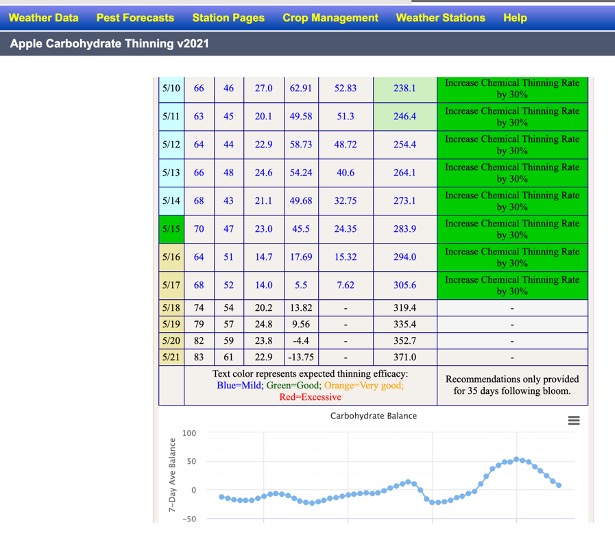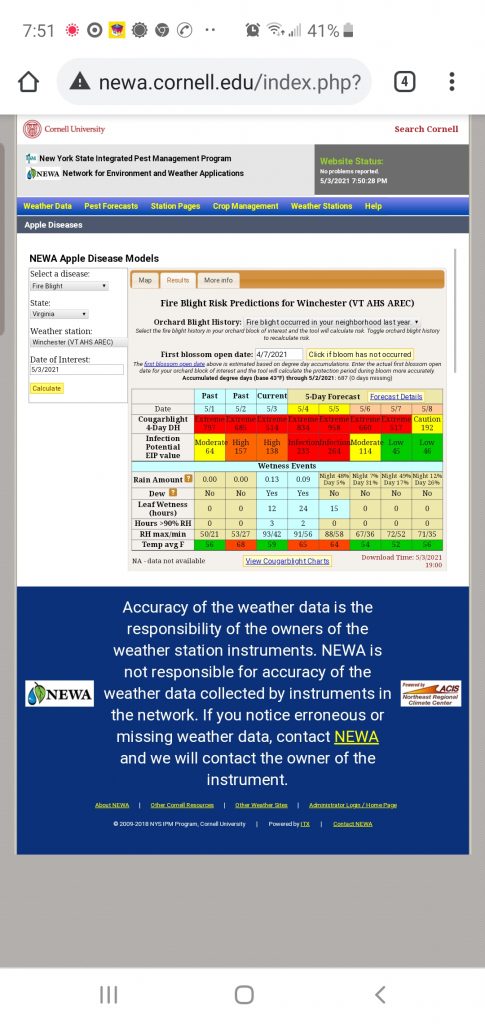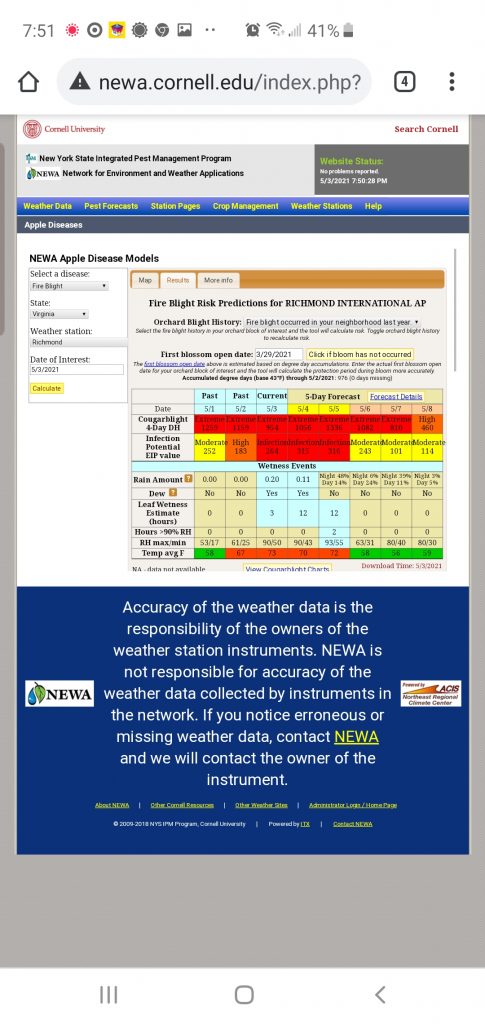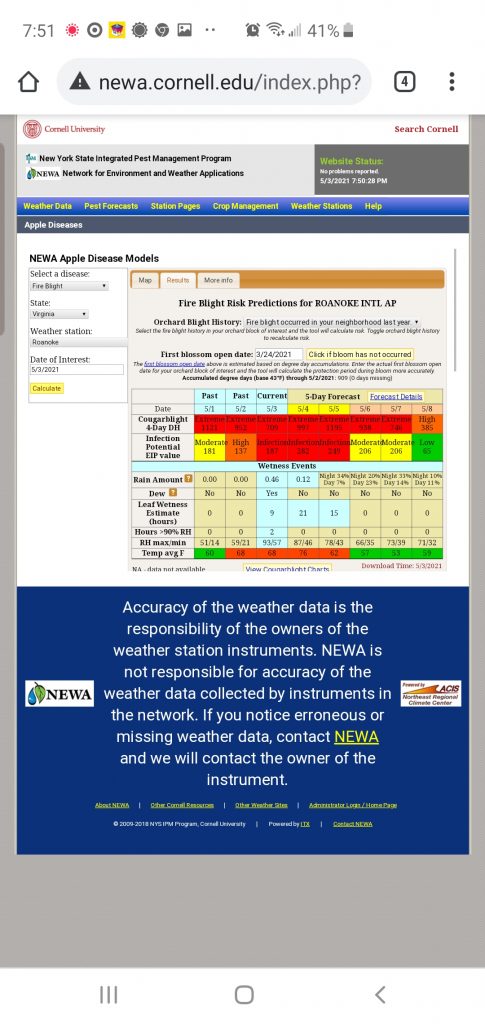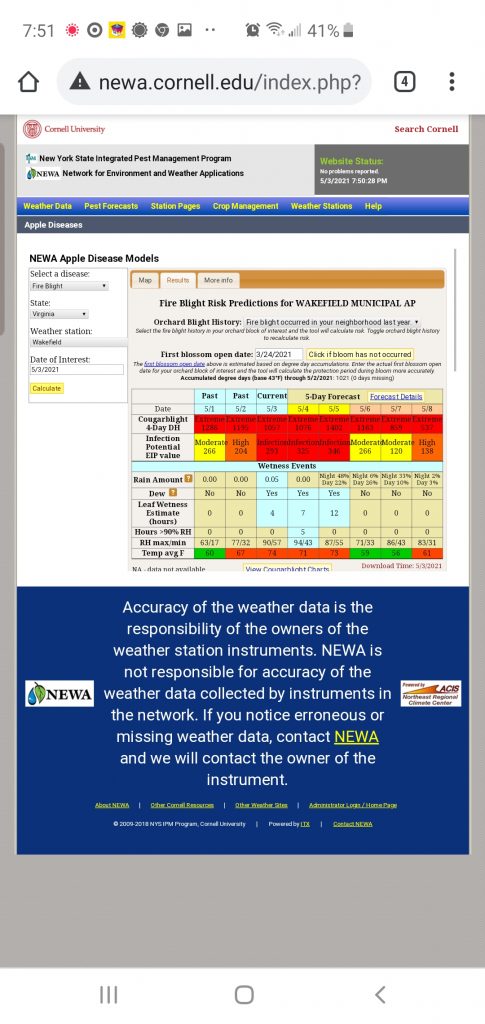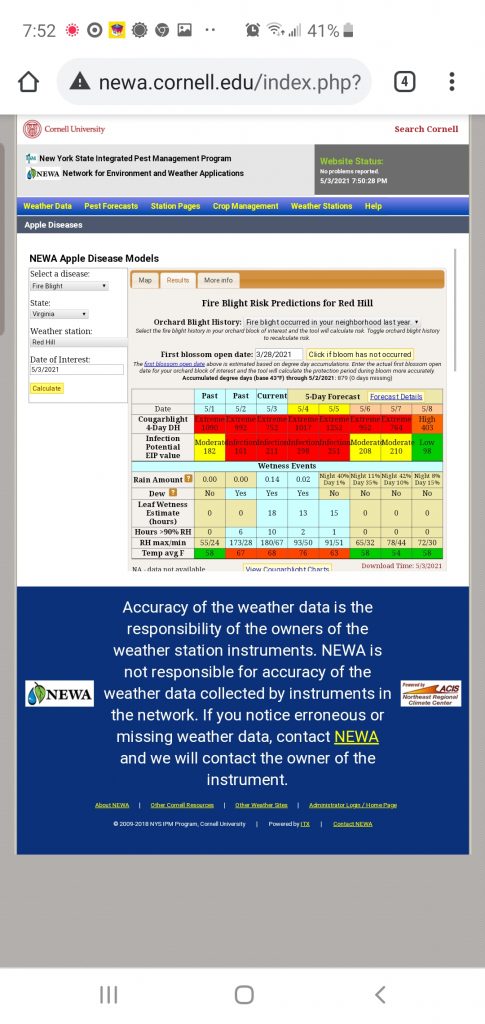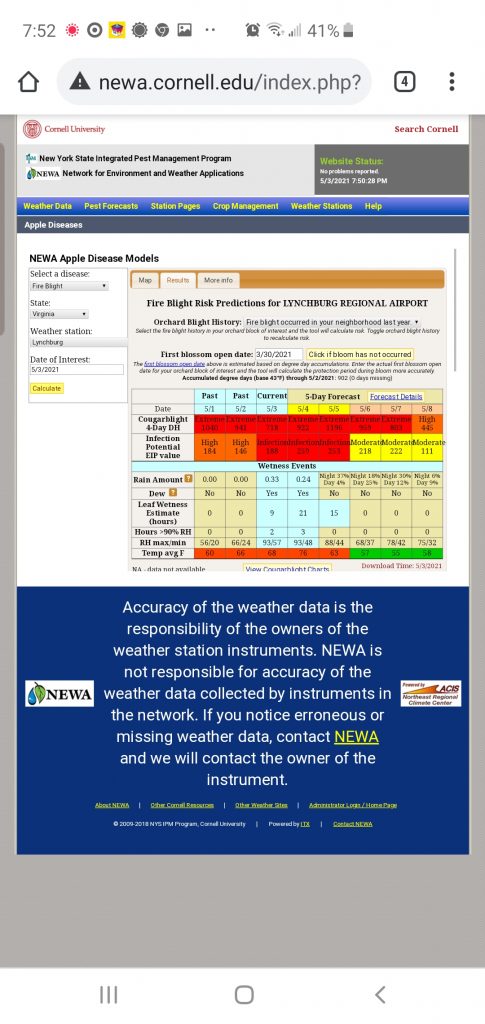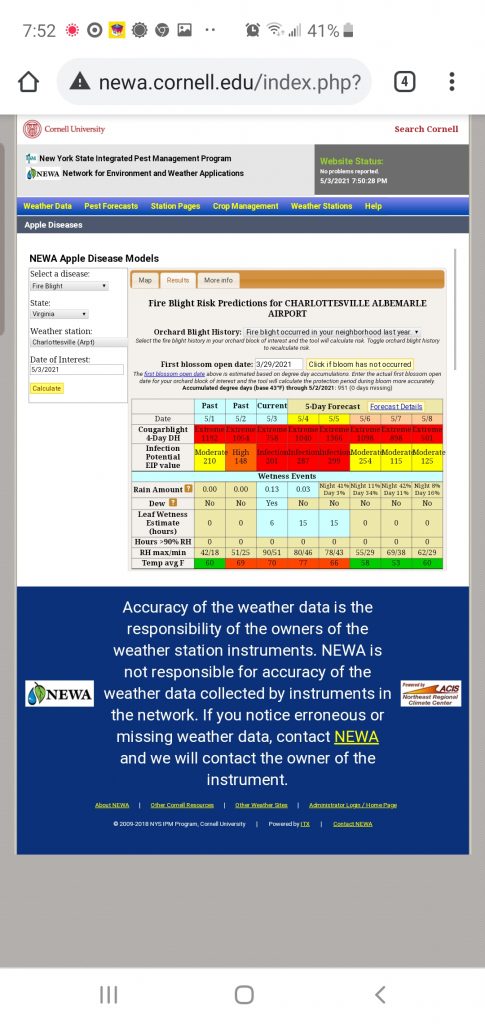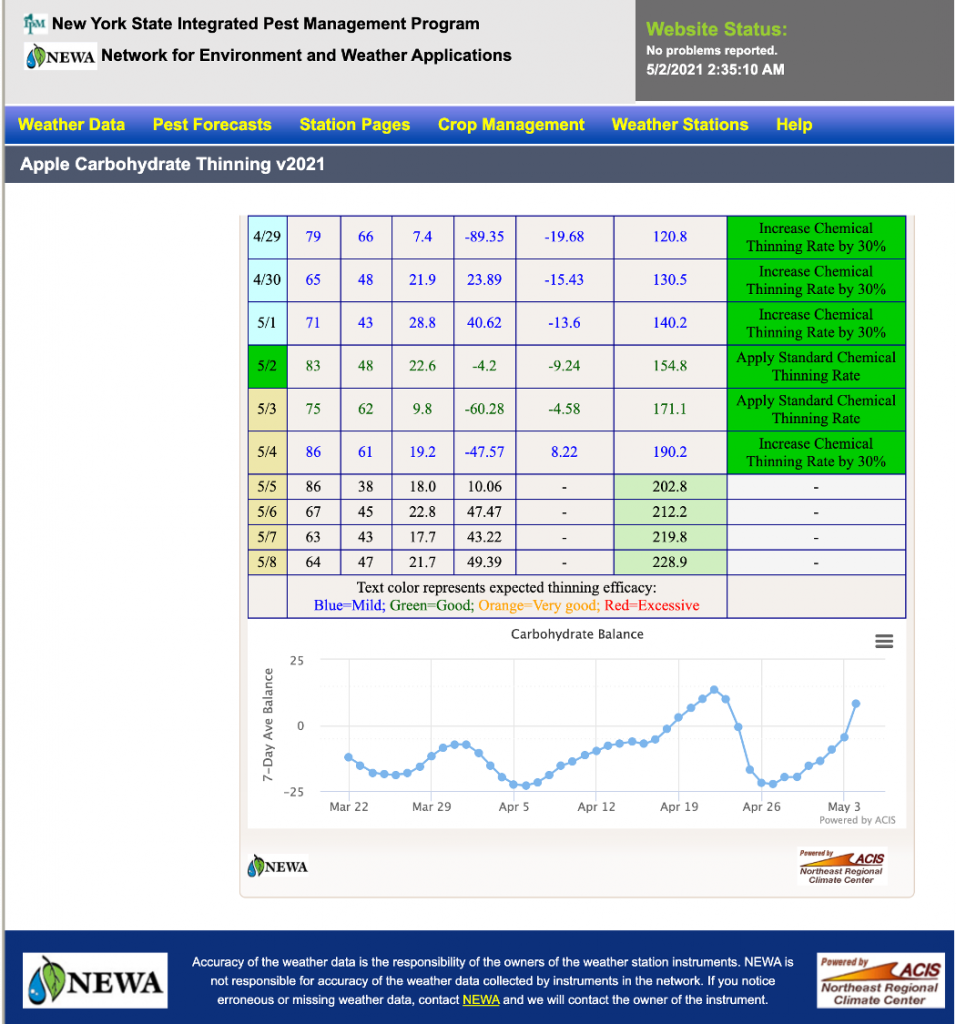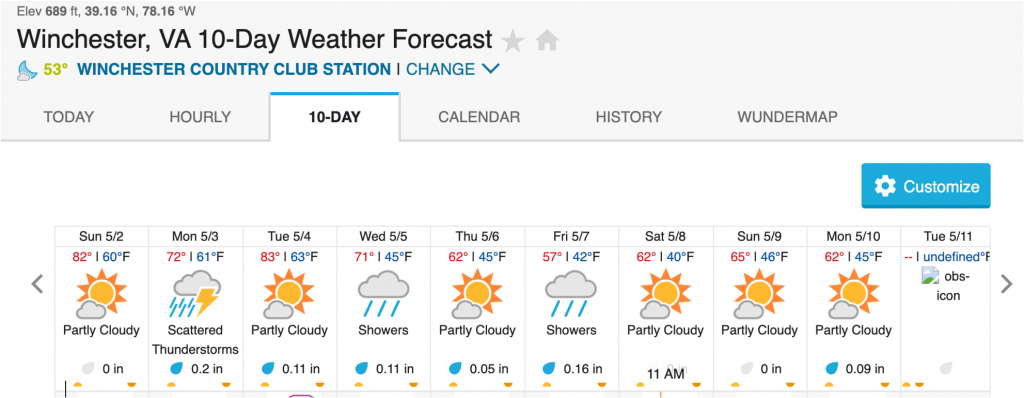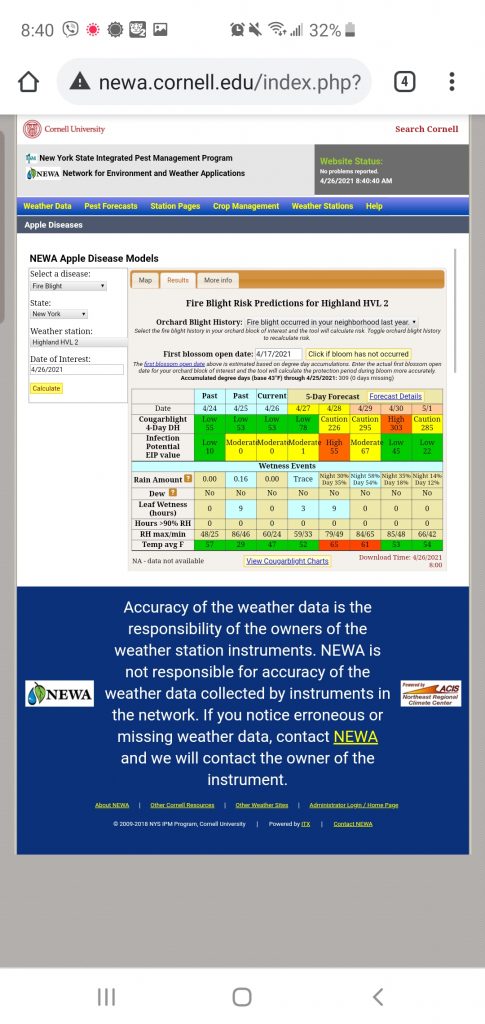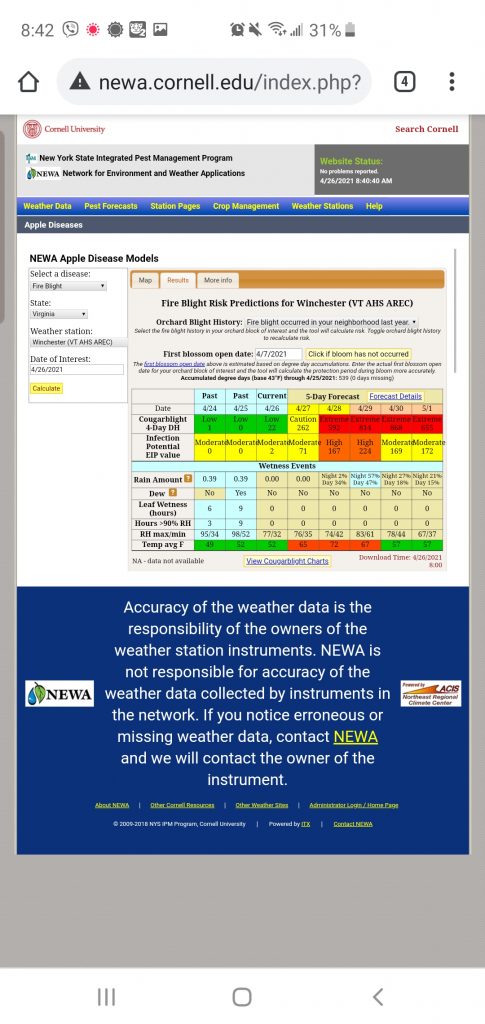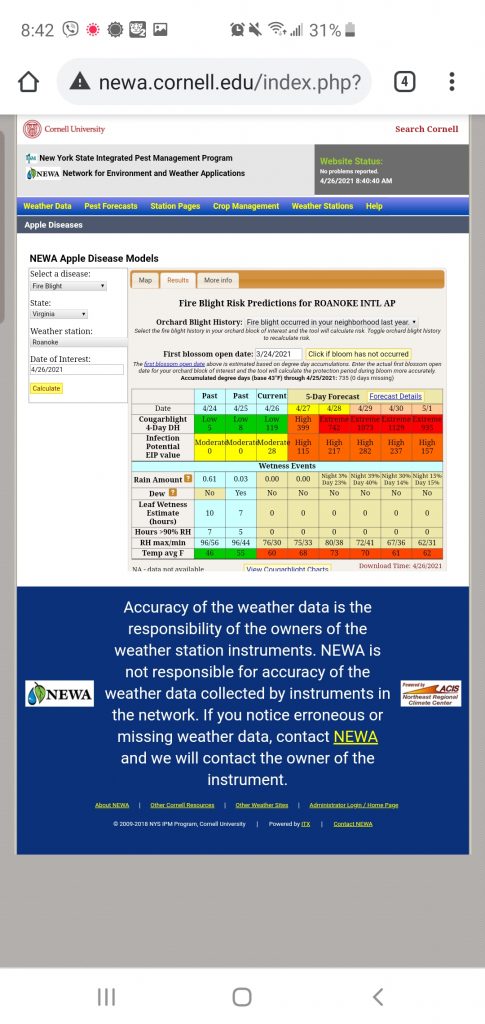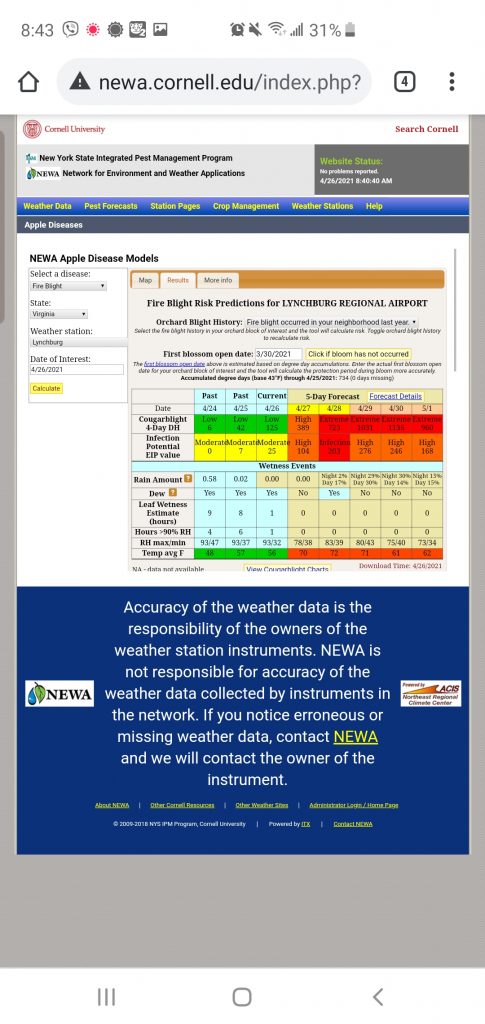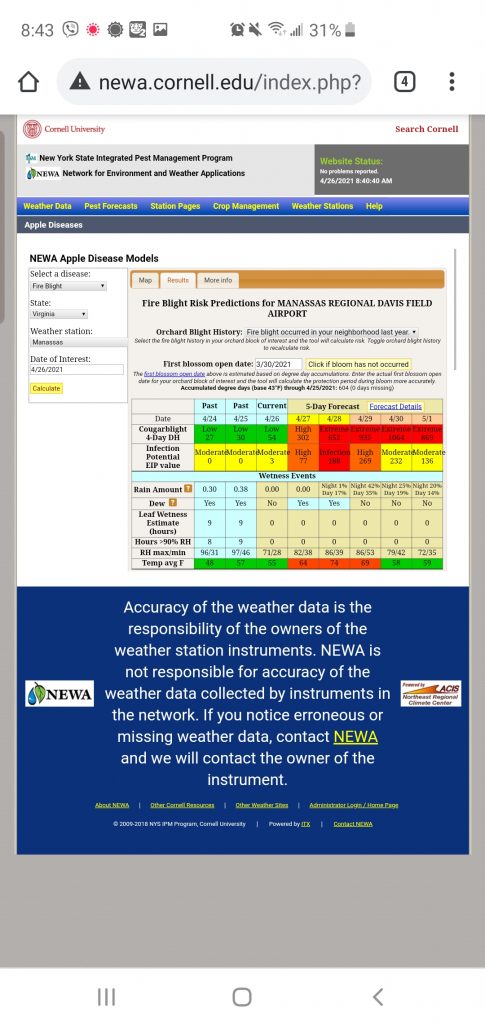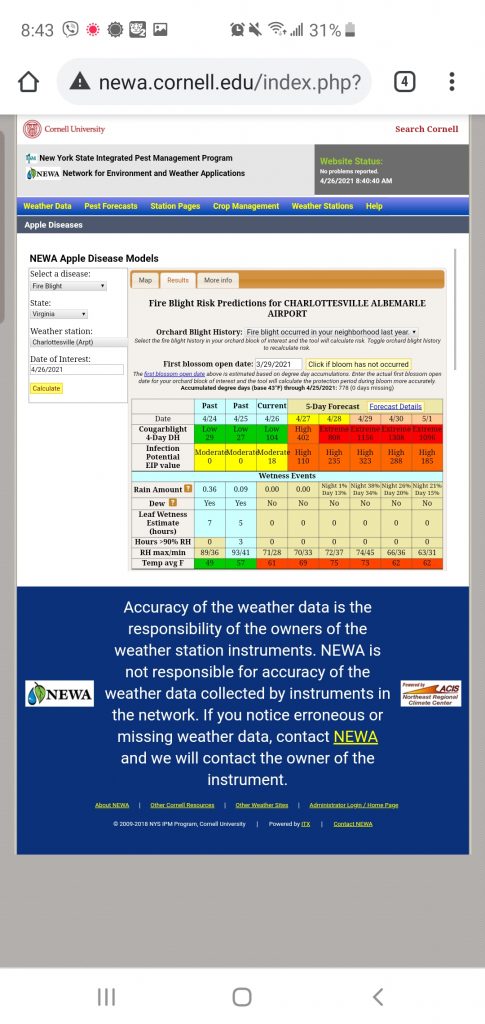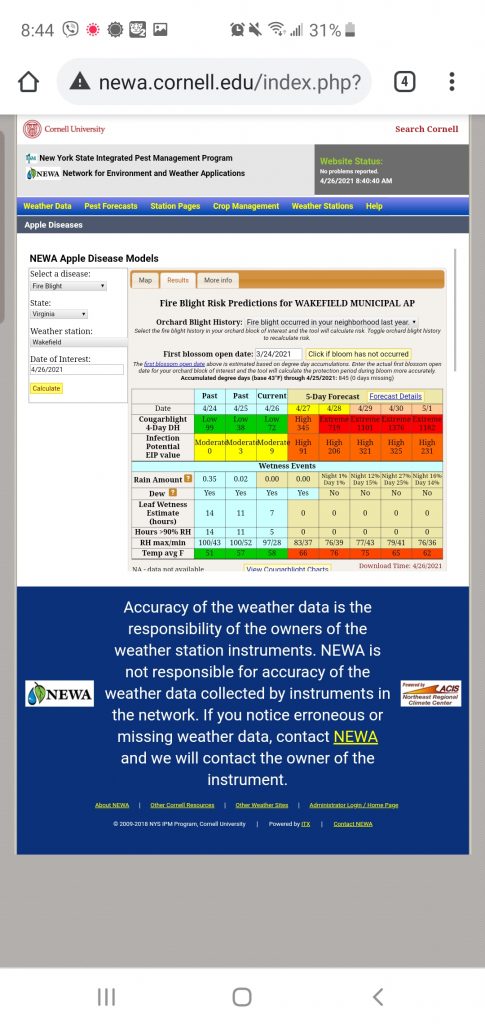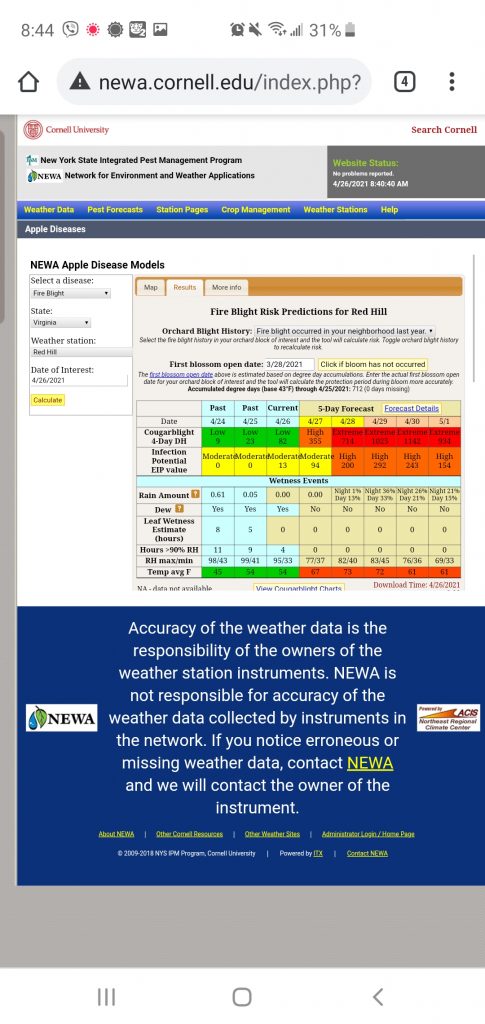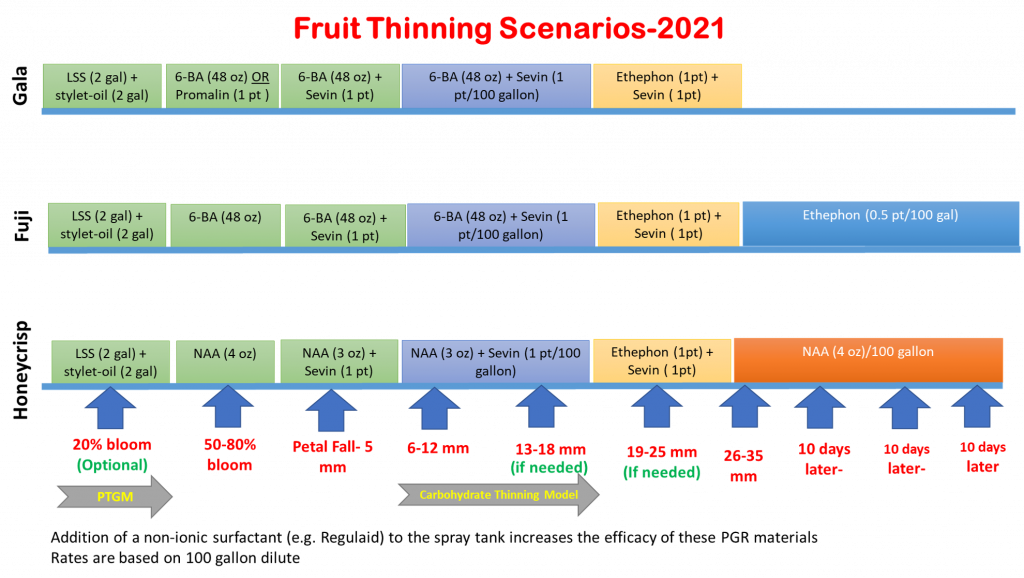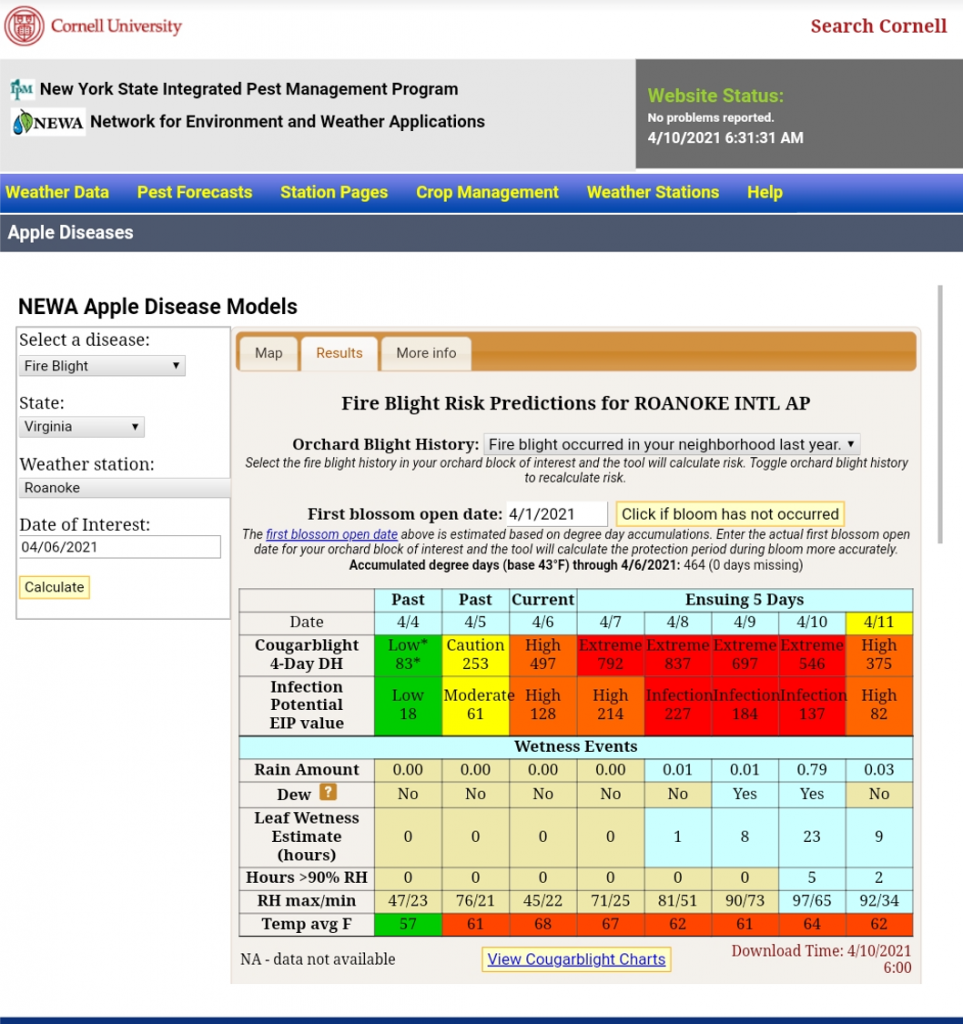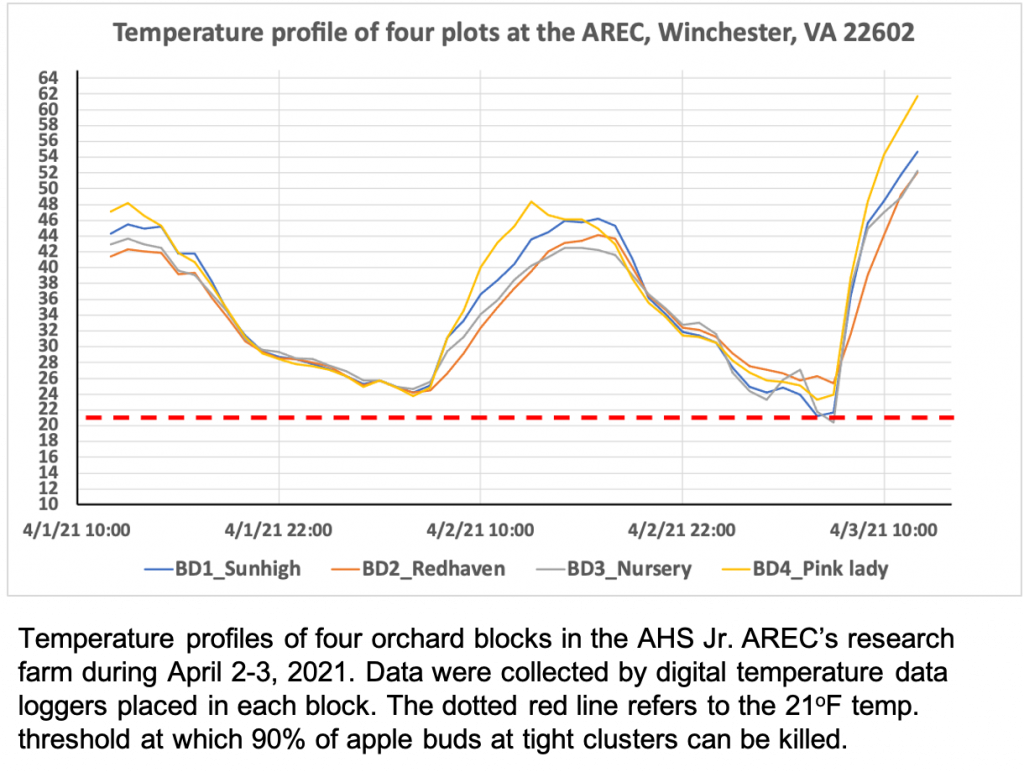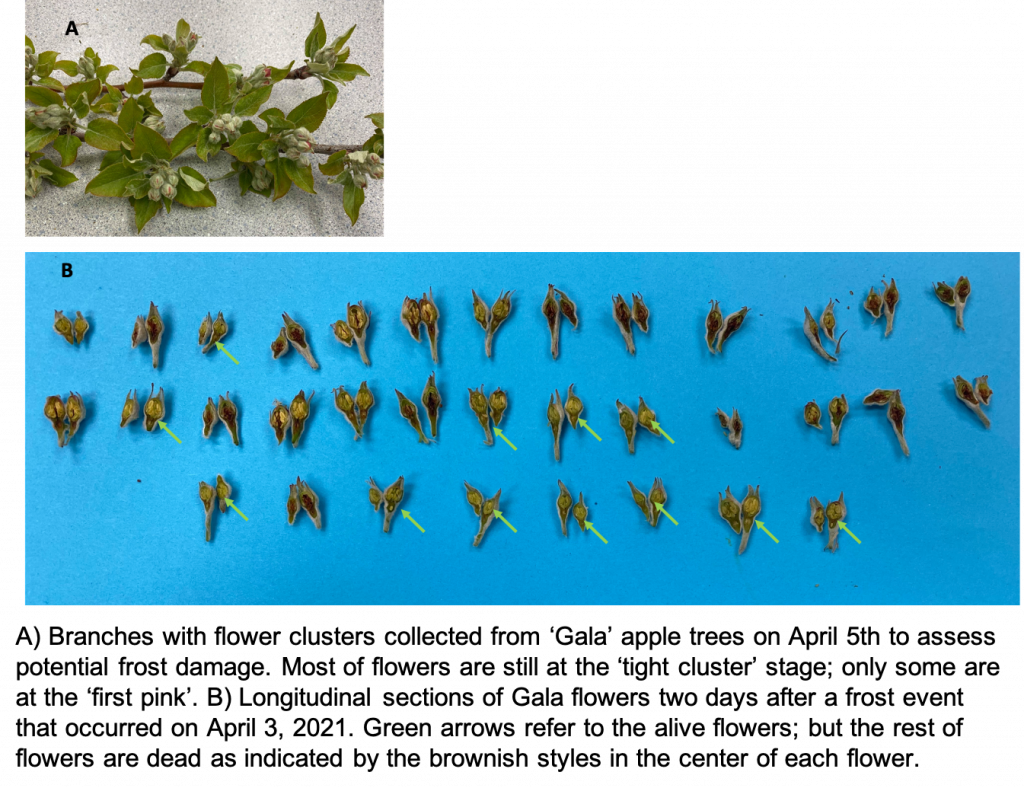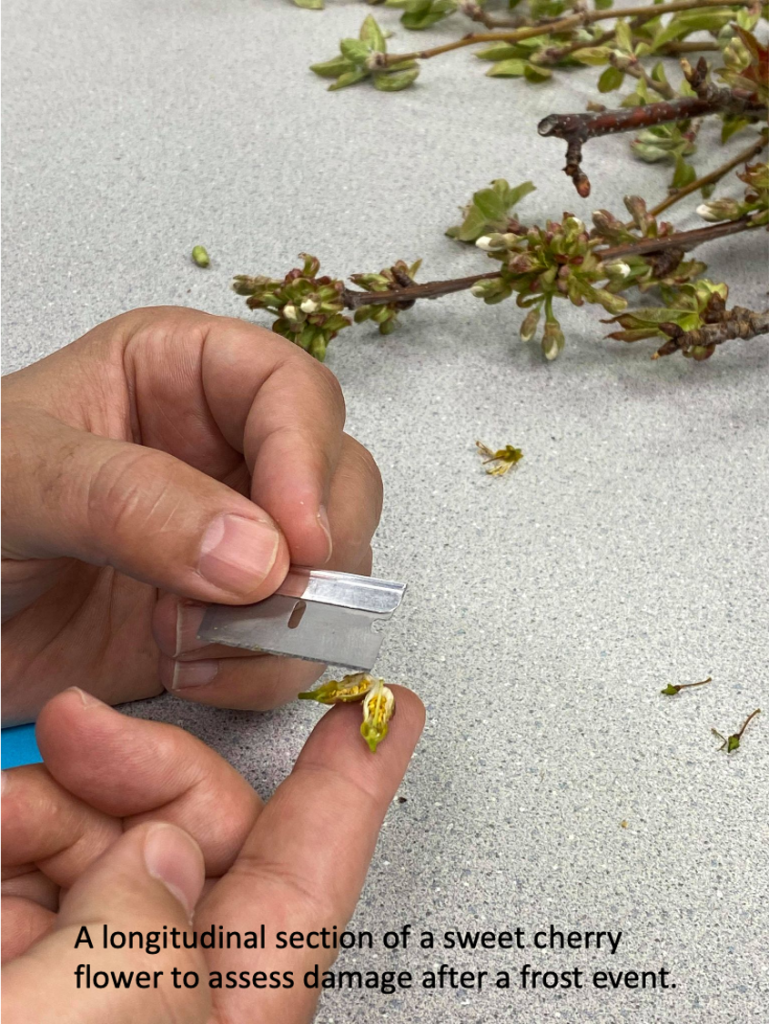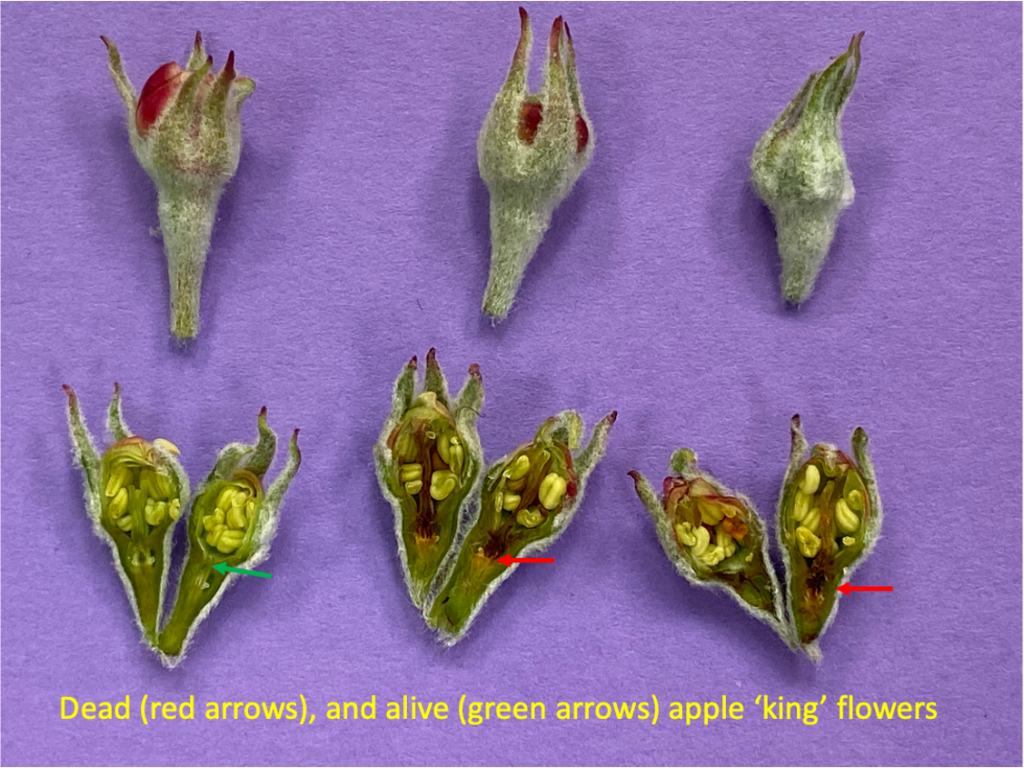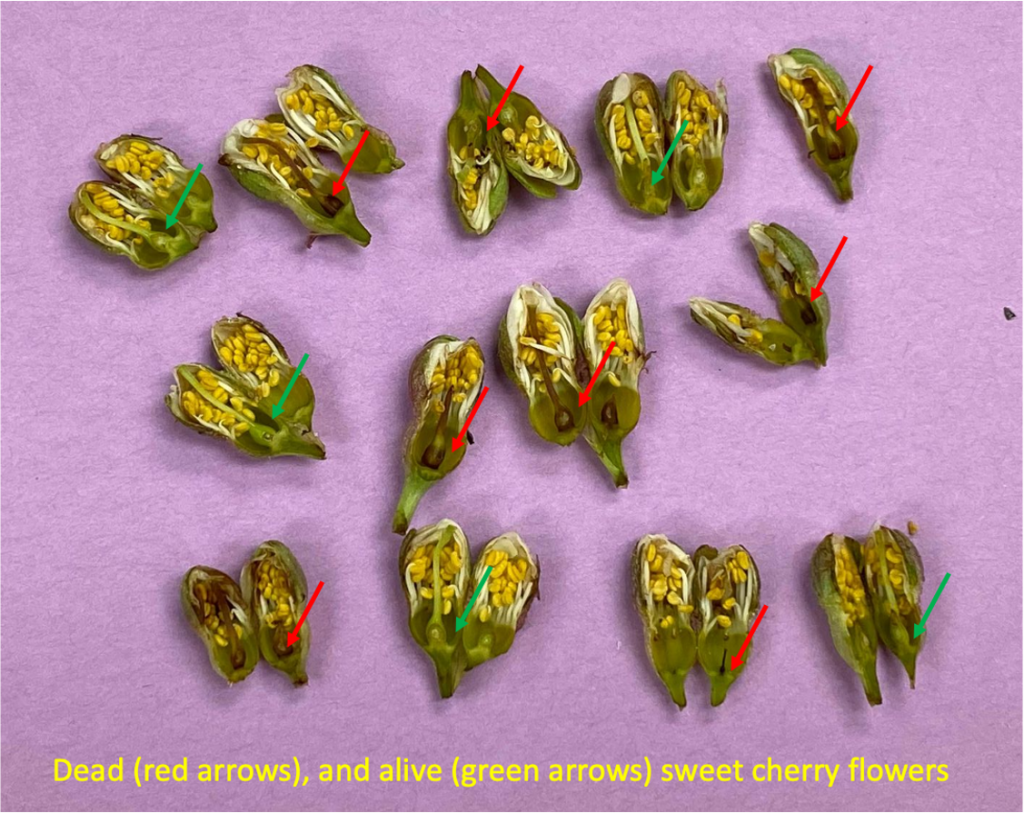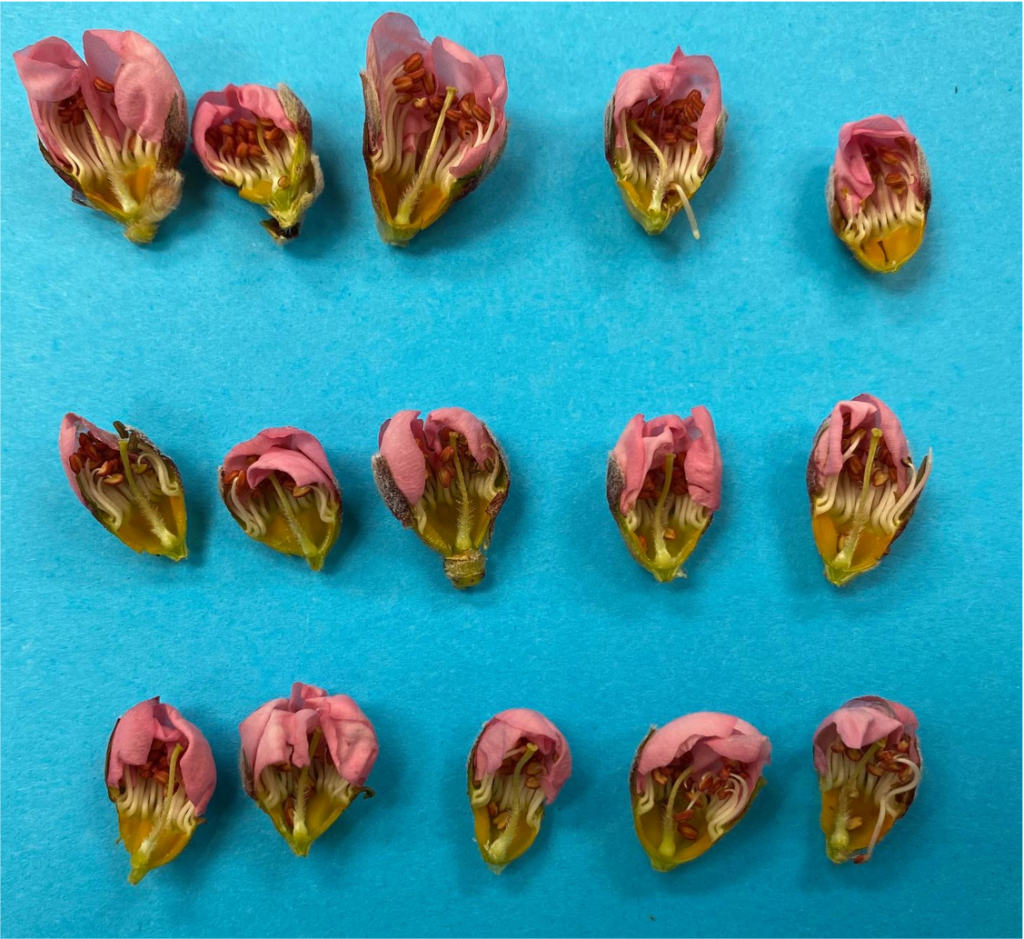The pre-harvest drop refers to the abscission of fruits from the tree before horticultural maturity. Depending on the cultivar and growing season, yield losses due to pre-harvest drop can reach 30%. Factors such as heat and drought stress, heavy insect infestation, and late summer pruning can increase the severity of fruit drop. Early-maturing cultivars (e.g., Gala and Honeycrisp) are usually more prone to fruit drop than late-maturing cultivars (e.g., Fuji and Pink Lady). Ethylene, the ripening hormone, is considered the primary driver of pre-harvest drop, and therefore ethylene inhibitors are used to control the pre-harvest drop in apple orchards. ReTain (from Valent Bioscience) and Harvista (from AgroFresh) are the two ethylene inhibitors labeled for pre-harvest drop control in Virginia. ReTain inhibits the biosynthesis/production of ethylene, whereas Harvista prevents ethylene reception and action. The purpose of this blog post is to share with you the results of two experimental trials we conducted in the 2018 and 2019 seasons to explore the effects of different rates and application timings on the efficacy of these materials.
In 2018: we examined two rates of ReTain (166g/acre and 333g/acre) and three application timings (1 week, 3 weeks and (1 & 3) weeks before the anticipated harvest date) on the percentage of fruit drop (%) of Gala apples. We used 6 trees per treatment. We flagged and counted 100 fruit/tree at 4 weeks before harvest (WBH), and we counted the fruits on these trees every week starting at 1 WBH through 4 WAH. The percentage of fruit drop (%) at each stage was calculated relative to the initial fruit count. In addition to fruit drop, we also investigated the effects of different treatments on fruit quality parameters (fruit weight, size, firmness, color, sugar content, starch index, and acidity). The findings of this trial can be concluded in four points: a) The effect of ReTain treatments on fruit drop was more evident at 1 and 2 weeks after harvest. b) Applying ReTain at the full rate (333g/acre) 3 weeks before the anticipated harvest date reduced fruit drop by 40-50% and extended the harvest season by 1-2 weeks. The same results were obtained when ReTain was used at half rate (166g/acre) at 1 and 3 WBH. C) fruits treated with ReTain (full rate) were firmer, had a lower starch index and lower brix than the untreated checks. However, ReTain-treated fruits were generally less colored than untreated checks. D) no differences in fruit size were found between ReTain- treated and untreated fruits. (Please refer to Tables 1 & 2).
Table 1: The effects of ReTain rate and application timing on the pre-harvest fruit drop (%) of Gala apples-Season 2018.

Values sharing the same letters are not statistically significant.
WBH: weeks before harvest; WAH: weeks after harvest.
Table 2: Gala fruit quality as affected by ReTain applications- 2018.

In 2019: we examined 2 rates of ReTain (333 g/acre and 666 g/acre), 1 rate of Harvista (121 fl oz/acre), 3 application timings for ReTain (at 1, 3 and (1&3) weeks before harvest) and 2 application timings for Harvista (at starch index 2 and at starch index (1.5 and 3). Again, six trees were used per treatment. The total number of fruits on each tree was counted four weeks before harvest. The percentage of fruit drop was calculated starting at 1 WBH and through 3 WAH. We also examined the effects of different treatments on the fruit quality of Gala apples at harvest. Our results indicated that: a) a full rate (333 g/acre) of ReTain applied at 3 WBH was not statistically different than a double rate (666 g/acre); b) Harvista applied twice (at starch index 1.5 and 3) showed better results on fruit drop than the single application (at starch index 2); c) There were no significant effects on fruit size and weight when either ReTain or Harvista were used; d) Fruits treated with ReTain were generally firmer than control, but had poor coloration; e) Harvista did not improve fruit coloration, but also did not reduce it compared to control; f) ReTain applications at a full rate significantly reduced the fruit’s ethylene content, but it required two applications of Harvista to acquire the same effect. (Please refer to Tables 3 & 4)
Table 3: ReTain and Harvista effects on the pre-harvest fruit drop (%) of Gala apples-2019
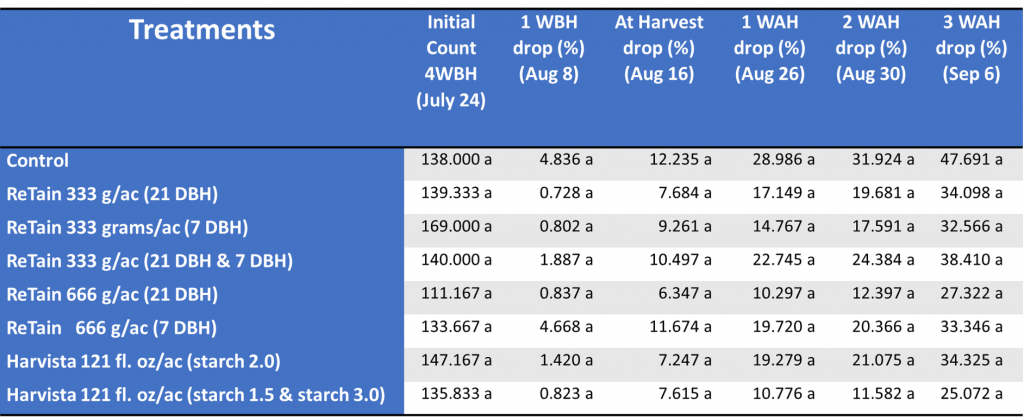
Table 4: ReTain and Harvista effects on fruit quality of ‘Gala’ apples-2019
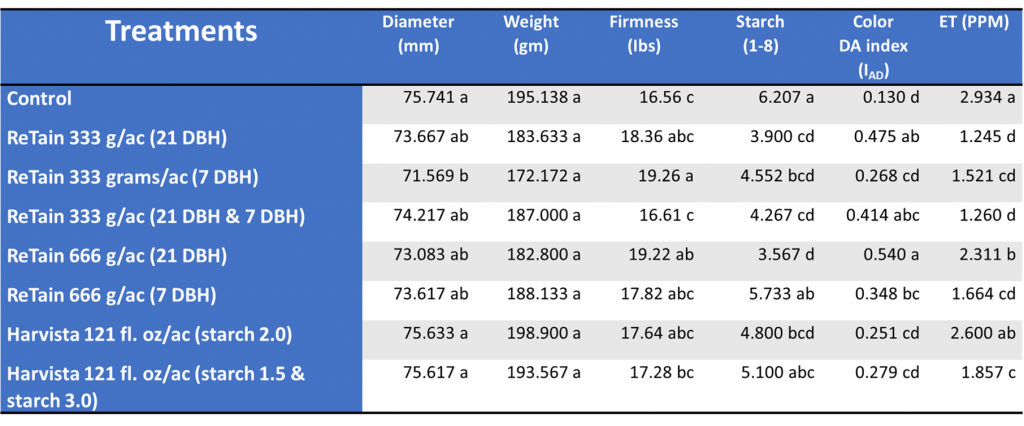
Other general notes:
- 6h drying time after ReTain and Harvista applications is required for achieving better results.
- For optimal results, ReTain and Harvista should be applied with 100 gal/acre as a complete spray.
- ReTain label allows the use of up to two pouches per acre either as a single spray or as a split application for apple.
- Harvista can be applied close to anticipated harvest date (within 3 days prior to harvest).


